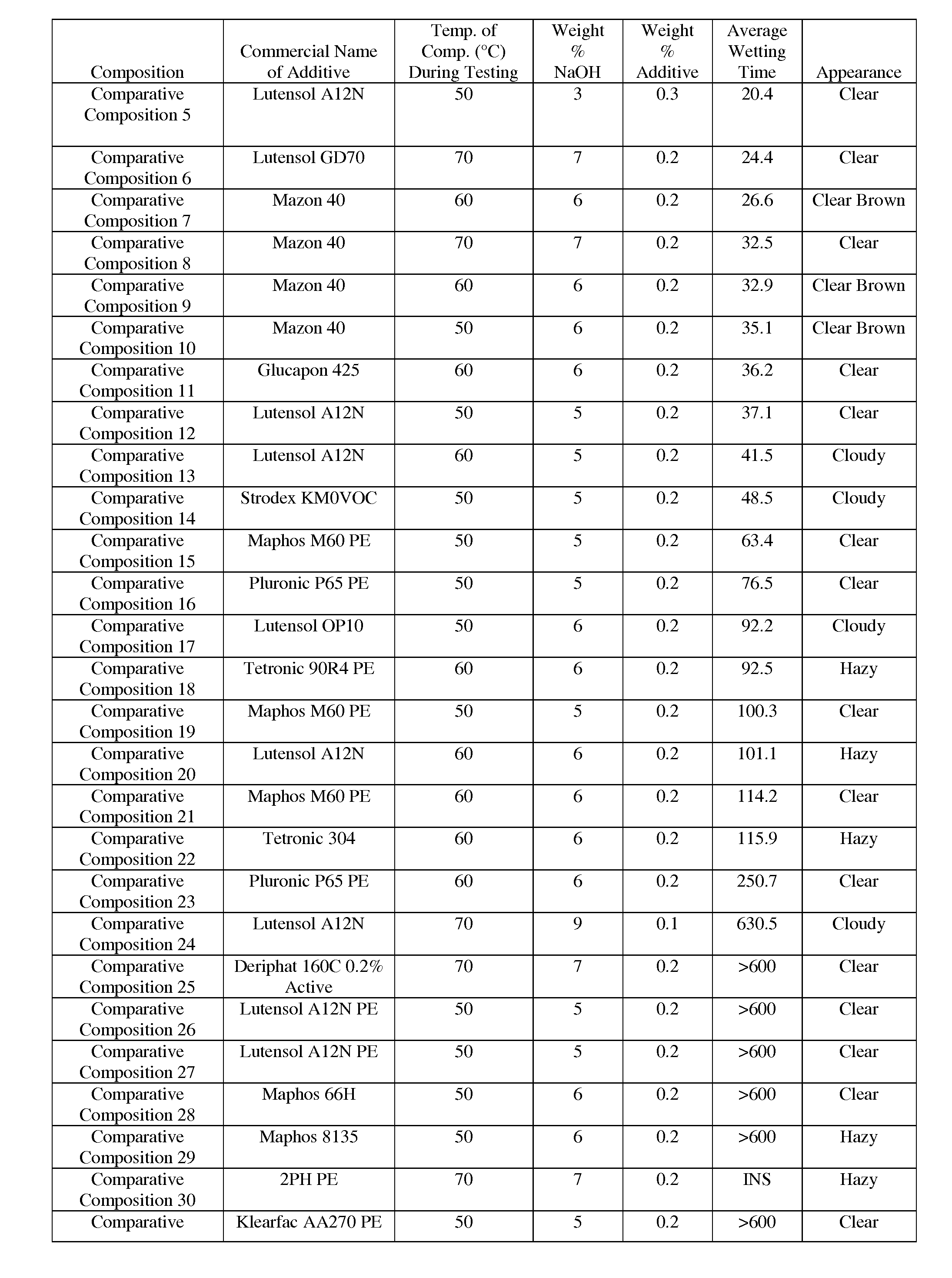Method Of Digesting Lignocellulosic Material
a technology of lignocellulosic material and lignocellulosic acid, which is applied in the field of digesting lignocellulosic material, can solve the problems of increasing processing time, increasing costs, and reducing the ultimate yield of cellulose that can be recovered, so as to facilitate the wetting of lignocellulosic material, increase the solubility of branched digestion additive, and increase the ability of caustic composition
- Summary
- Abstract
- Description
- Claims
- Application Information
AI Technical Summary
Benefits of technology
Problems solved by technology
Method used
Image
Examples
examples
[0064]A series of caustic compositions (Compositions 1-40) are formed in accordance with this disclosure. A series of comparative compositions (Comparative Compositions 1-32) are also formed but do not represent this disclosure. Each of the Compositions and Comparative Compositions includes 3 to 9 weight percent of sodium hydroxide (and thus have a pH of at least about 10), 0.1 to 0.3 weight percent of an additive based on a total weight of the Compositions, respectively, and a balance of water. The additives utilized to form Compositions 1-40 are representative of various embodiments the branched digestion additive of this disclosure. The additives utilized to form Comparative Compositions 1-32 are not representative of the branched digestion additive of this disclosure and thus do not represent this disclosure. Each of the additives is described in the Tables / Figures using commercial trade names.
[0065]After formation, each of the Compositions and Comparative Compositions are heate...
PUM
| Property | Measurement | Unit |
|---|---|---|
| Wetting Time | aaaaa | aaaaa |
| Wetting Time | aaaaa | aaaaa |
| Draves Wetting Time | aaaaa | aaaaa |
Abstract
Description
Claims
Application Information
 Login to View More
Login to View More - R&D
- Intellectual Property
- Life Sciences
- Materials
- Tech Scout
- Unparalleled Data Quality
- Higher Quality Content
- 60% Fewer Hallucinations
Browse by: Latest US Patents, China's latest patents, Technical Efficacy Thesaurus, Application Domain, Technology Topic, Popular Technical Reports.
© 2025 PatSnap. All rights reserved.Legal|Privacy policy|Modern Slavery Act Transparency Statement|Sitemap|About US| Contact US: help@patsnap.com



